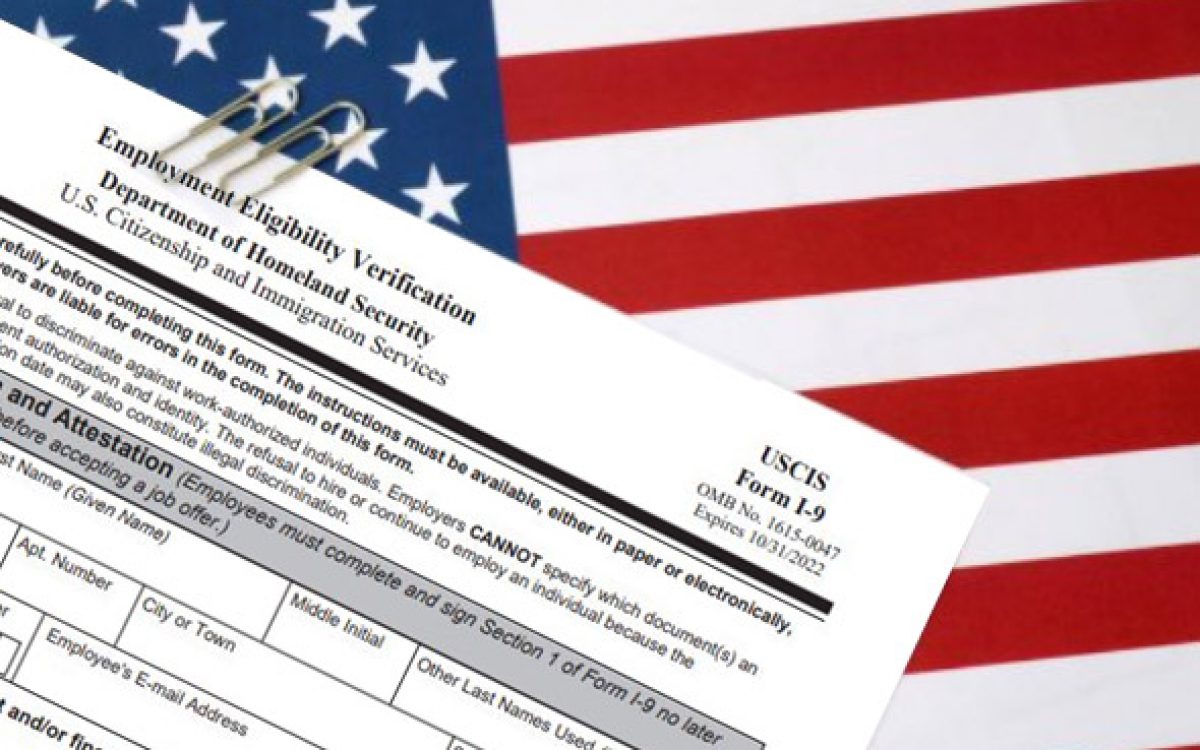Although the Department of Homeland Security (DHS) recently relaxed I-9 requirements for employers operating remotely as a result of the COVID-19 crisis, many employers have questions about how to satisfy the new requirements during this time of remote work and “Zoom” conferences.
A. Summary of the New I-9 Rules?
Under federal guidance, employers that are operating remotely are temporarily no longer be required to review an employee’s identity and work authorization documents in the employee’s physical presence. Instead, inspection of these documents can be conducted remotely (e.g., by video, fax, or email).
According to the U.S. Citizenship and Immigration Services (USCIS), “if employers are performing inspections remotely (e.g., over video link, fax or email, etc.) they must obtain, inspect, and retain copies of the Section 2 documents within three business day of hire. In addition to completing Section 2, Employers also should enter ‘COVID-19’ in the Additional Information field.”
Then, when “normal operations resume,” all employees whose documents were presented via remote verification must, within three business days, undergo the required “in-person” examination of documents. The person conducting the physical examination should write the words “documents physically examined” in the Additional Information box in Section 2 and should include their name and the date of inspection.
It is important to keep in mind that the DHS’s relaxed requirements apply only to employers who are operating remotely. According to the guidance, if there are employees physically present at a work location, then you must follow the normal in-person physical inspection rules.
B. Employer Q and A
While relaxation of the I-9 rules has been helpful, questions still abound. Here are the most common questions we have seen and the best practices to follow.
- How is an employee expected to fill out Section 1?The announcement makes clear that employees are still required to fill out their section (Section 1) of the I-9 no later than the first day of employment. But DHS’s announcement is silent on how employees will complete Section 1 of the I-9 if they are operating remotely.
You can presumably email the Form I-9 to the employee, have the employee complete Section 1, sign, date, scan and email the completed Section 1 back to you. For employees without a home printer and/or scanner, you should consider having them provide Section 1 in the same way they provided their documents (by video, smart phone photo, fax or other electronic method). Once operations resume, the employee should bring the original signed Section 1 to your worksite.
- If we have a policy of not keeping copies of documents presented as part of the I-9 process, what should we do with our copies of the remotely provided documents after the in-person inspection occurs?
The safest course of action is to print out the electronic copies of documents received remotely. But instead of keeping them with the employee’s I-9, keep them in a separate file until DHS clarifies what should be done with them. - Is the employee required to bring in hard copies of the same documents they provided remotely?The government has made it clear that you are not supposed to request or even suggest that employees provide any specific document or documents when filling out a Form I-9. Here, the announcement seems to assume employees will bring in for inspection the same document or documents they provided remotely but does not specifically say so.
Because the employee has already made their choice of documents when they provided them remotely, DHS may find it reasonable for you to ask to see hard copies of the same document(s). If the employee refuses or has lost one or more of those document(s), you may consider filling out a new Section 2 and attaching it to the original Section 2, with a brief explanation in the Additional Information field.
- What triggers the determination that “normal operations” have resumed?The announcement states that within three business days after you resume “normal operations,” the in-person document review must occur. But what if you implement a partial resumption of operations, scaled back operations, or even just start a test run of operations?
What if you call some of your employees into your worksite in preparation for returning to normal operations?The recommended approach is to determine if the employee is going to be required to physically come into the office as part of the resumption of operations, whether to attend orientation, pre-employment training, or other reason. If the employee is scheduled to come in to the workplace for only a day or two, or even for only a few hours, you should instruct them to bring their original I-9 document(s) with them, and you should conduct the in-person inspection at that time.
In short, rather than bank on an argument that Section 2 was not filled out late because “normal operations” for the entire company or workforce had not yet commenced, you should err on the side of doing the document inspection as early in the process as possible (on an employee-by employee basis as they return to the workplace), rather than later.
